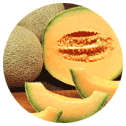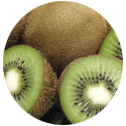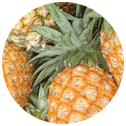 Full List of Fruits
Full List of Fruits  Kundong fruit
Kundong fruitKundong fruit
Scientific name - Garcinia parvifolia
Referred by several common names like Brunei cherry in English and Asam aur aur in Malay and as Entelang, Ete, Gandis, Kandis, Kedundong, Kumanjing, Kundong in Borneo, Garcinia parvifolia is a cherry sized fruit which has red to yellow skin that is juicy. Resembling mangosteen in appearance, this small to medium sized tree bears fruit that tastes tart.
Kundong (Citrus macroptera) is a tropical fruit native to the Malay Peninsula and other parts of Southeast Asia. The fruit has a unique shape, resembling a cross between a grapefruit and an orange. The rind is thin and smooth, with a pale yellow color, while the flesh is juicy and sweet.
Kundong is rich in nutrients and vitamins, including vitamin C, folate, potassium, and magnesium. It is also a good source of dietary fiber. In addition, the fruit contains several bioactive compounds such as limonene, naringenin, and hydroxycitric acid. These compounds are known to have antioxidant and anti-inflammatory properties and may aid in the prevention of certain diseases.
Covering a very large area, they are classified under the category of Sub-canopy tree that grows upto 33metre tall and 23 cm dbh-diameter at breast height. The shoot of the tree has yellow to white latex with leaves having no trichomes, simple, venation inconspicuous of pinnately arranged leaf veins. The flowers - 9 mm diameter, white-yellow, placed in leaf axils. Fruits- 17 mm diameter, yellow-orange-red, fleshy berry, seeds with white aril.
Kundong fruit is a tropical fruit native to Southeast Asia. It is believed to have several health benefits, including weight loss, improved digestion, and improved blood circulation.
They are mostly spotted in hillsides and ridges, but are not limited to just that, they can also be seen on alluvial sites and along rivers; with an 800m altitude, they are a lightly disturbed and undisturbed mixed dipterocarp and swamp forests.
Kundong fruit is a tropical fruit that is rich in vitamins, minerals, and antioxidants. It contains vitamin C and other antioxidants that can help boost the immune system and protect against diseases. It also contains dietary fiber which can help improve digestive health and reduce the risk of certain types of cancer. Additionally, it is known to have anti-inflammatory properties, which can help reduce inflammation and improve overall health. Kundong fruit is also known to improve heart health, reduce cholesterol levels, and improve blood circulation.
The health benefits of Kundong fruit include its ability to boost the immune system, lower cholesterol levels, improve digestion, aid in weight loss, reduce inflammation, protect against certain diseases, and even fight cancer. It helps the body fight off infections and strengthens the immune system. It's also high in dietary fiber, which helps keep the digestive system healthy and regular.
The wood of Kundong is used for multipurpose and they are good source of Resin. In general, the plant is sometimes used as a rhizome for the mangosteen. With a sour flavor, the fruits are suitable for eating and the young sprouts and leaves are used as a vegetable. Apart from being eaten fresh out of hand or dried, they are also used for flavoring other foods.
The fruit is rich in dietary fiber, which helps to reduce hunger and make you feel full for a longer period of time. This can help to reduce calorie intake and promote weight loss.
The high fiber content of Kundong fruit also helps to improve digestion by aiding in the breakdown of food. This helps to prevent constipation and improve nutrient absorption.
Kundong fruit is also believed to improve blood circulation. The high levels of vitamin C and other antioxidants in the fruit help to reduce inflammation in the body, which can help to improve blood flow. This can help to improve energy levels and reduce fatigue.
In addition, Kundong fruit is a good source of potassium and magnesium, two minerals that are important for heart health. Potassium helps to regulate blood pressure and reduce the risk of stroke and heart attack, while magnesium helps to reduce cholesterol levels and improve blood vessel health.
Inspite of the towering demand, most of the fruits are still collected widely in the tropical rain forest area. With regards to cultivation, the tree best suits for tropical climate- humid. This fast-growing tree has the ability to start producing as little as four years. Though specific information on this species is unavailable, seed of most members of the species can be slow to take root hence it is believed that it takes just about 6 months or more, even if sown fresh. Kundong is also rich in antioxidants, which help protect the body from free radical damage and reduce inflammation. It's also high in potassium, which helps to lower blood pressure and reduce the risk of stroke.
Kundong fruit is also a great source of vitamin A, which helps to keep the eyes healthy and can reduce the risk of cataracts. It's also rich in vitamin E, which helps to protect the skin from premature aging and wrinkles.
Kundong is also a good source of folate, which is important for cell growth and development, and can help to reduce the risk of birth defects in pregnant women. Finally, Kundong is also rich in iron, which helps to keep the blood healthy and can reduce the risk of anemia.


















